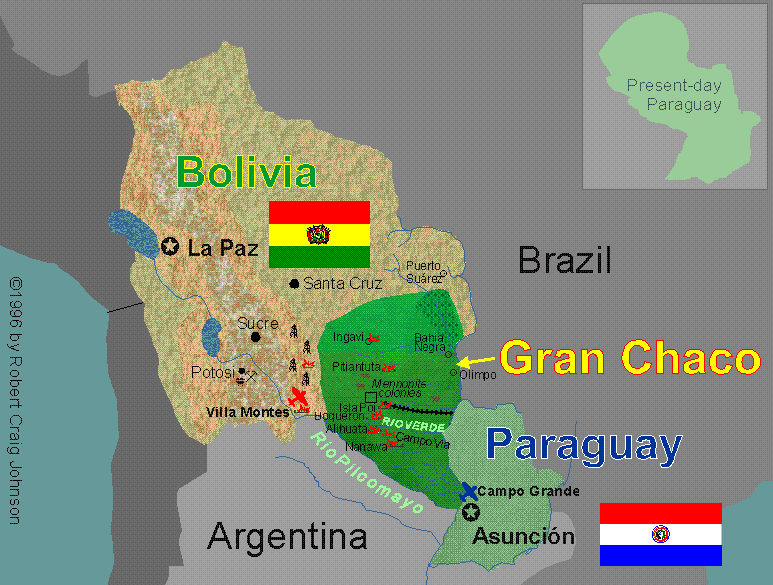By Jorge Quispe
Infosurhoy.com
The second largest continuous forest ecosystem in South America, the Gran Chaco Americano already has lost nearly 90% of its territory to indiscriminate deforestation, ranching and agriculture.
LA PAZ, Bolivia – The expansion of agricultural activities is threating the conservation of the Gran Chaco in Bolivia, an area rich in biodiversity and hydrocarbons, where drug trafficking has also taken hold in recent years.
The Gran Chaco covers 127,755 km2 of Bolivian territory in the departments of Santa Cruz, Chuquiasca and Tarija. Of that total, 34,411 km2 are protected in the Kaa-Iya National Park and Integrally Managed Natural Area, which is home to about 30 indigenous communities, including the Chiquitanos, Guaraní and Ayoreos.
The reserve, which is in southeastern Bolivia, is larger than Belgium.
A lack of security in the area threatens not only the Kaa-Iya, but also the second largest hydrocarbon reserve in Latin America, in the Chaco municipality of Yacuiba, 386.4 kilometers south of the reserve.
Fernando Vidal, 71, the former mayor of Yacuiba (1999-2004) and announcer for Radio Popular, has been personally affected by the violence in this city in the Chaco region.
In October 2012, four masked men entered the radio station, poured gasoline on him and the broadcasting equipment and set them on fire. Vidal suffered third-degree burns on most of his body.
Minutes before the attack, he had been talking about smuggling along the border with Argentina.
“There is little control over the border, especially along the streams, where five kilometers of scrubland conceal the movement of undocumented immigrants and even drug trafficking,” he said.
Gilbert Muñoz, a prosecutor with the Attorney General’s Office and the leading authority assigned to investigate criminal cases in the province of Gran Chaco, confirmed Vidal’s claims.
Muñoz said the crimes most frequently committed in the Chaco region and along the border with Argentina are robberies, assaults, homicides and drug trafficking.
In the first half of 2013, Muñoz handled 1,000 cases of violent crime, similar to the amount during the first six months of 2012.
From January to June, there were at least 40 cases of drug trafficking along the border with Argentina, Muñoz said.
In February 2012, Bolivia’s Special Counter-narcotics Force (FELCN) intercepted a small plane in Camiri – a city 216.7 kilometers southeast of Kaa-Iya Park – that was transporting 3.5 kilograms of drugs to Paraguay. Narco-traffickers were using clandestine airstrips near the reserve.
In 2007, a laboratory for refining cocaine paste that was operated by Colombian, Paraguayan and Bolivian drug traffickers was found inside Kaa-Iya Park.
The laboratory, which produced 100 kilograms of cocaine a day, represented one of the largest busts in the past 20 years in Bolivia, according to the FELCN.
Environmental crimes in Kaa-Iya
During the first week of September, the Forest and Land Authority (ABT) reported the deforestation of 196 hectares of the Kaa-Iya Park by the community mining company Emcki S.A., which is facing charges for endangering a protected area.
The Kaa-Iya Park is the largest and richest in biodiversity of Bolivia’s 22 nature reserves, which represent 16% of the national territory (170,700 km2).
Illegal coca crops are being grown on 2,154 km2 of these reserves, according to the “Coca Crop Monitoring” report by the United Nations Office on Drugs and Crime.
In total, Bolivia produces 27,170 hectares of coca, of which 15,170 are illegal.
Conservation of the Gran Chaco Americano
The Gran Chaco Americano, of which Bolivia’s Chaco region is a part, is considered the second largest continuous forest ecosystem in South America, with its 1,066,000 km2shared by Argentina (62.19%), Paraguay (25.43%), Bolivia (11.61%) and Brazil (0.77%).
Deforestation has caused the Gran Chaco to be invaded by non-native plant species, turning prairies into scrubland, endangering 1,500 plant species and 514 mammal and bird species, according to Bolivian biologist Érika Cuéllar.
On Sept. 19-21, representatives of rural workers and indigenous groups from the four countries encompassing the Gran Chaco met in Buenos Aires, Argentina, to discuss conservation plans for the area.
During this second international meeting titled “Invincible Chaco Forest,” participants considered urgently needed measures for the sustainable development of the Chaco region, including conservation of the region’s ecosystems, water supply and economy.
Bolivia was represented by Horacio Zambaquiri, a member of the Guaraní indigenous community, as well as a delegation of 200 officials.
For the past two decades, indigenous Bolivians have worked together to preserve the Chaco region’s biodiversity.
In 1995, Guaraní and Chiquitanos mobilized to declare the Kaa-Iya Park an integrally managed natural area, allowing control over the advance of agricultural activities along its borders.
Since 1996, a group of indigenous has been working as parabiologists – specialists in wildlife protection – with Cuéllar, who provides them with up to 800 hours of training.
“The true guardians are the indigenous people who live in the region,” Cuéllar said.
The park now has 23 indigenous parabiologists, who document the situation of wild animals and protect the nature reserve.
Cuéllar also works to protect the guanaco, a nearly extinct wild relative of the llama.
“The fate of the guanaco portends the future of a number of smaller, less visible species,” she said.
As the guardians of the Kaa-Iya, the indigenous are given access to better sources of employment and income, are able to stay on their native lands instead of migrating to cities and contribute to the preservation policies of the territory they inhabit.
Cuéllar won the Rolex 2012 international award for her work in the Bolivian Chaco. The award of US$100,000 Swiss francs (US$107,357) will allow her to extend the training provided to the indigenous within the reserve in Paraguay and Argentina.
“I’m seeking funders and allies who believe in this focus on training and real involvement by the people,” Cuéllar said. “For now and for the next five years, I will be writing proposals that I hope will be financed so that we can continue working in the Chaco.”



